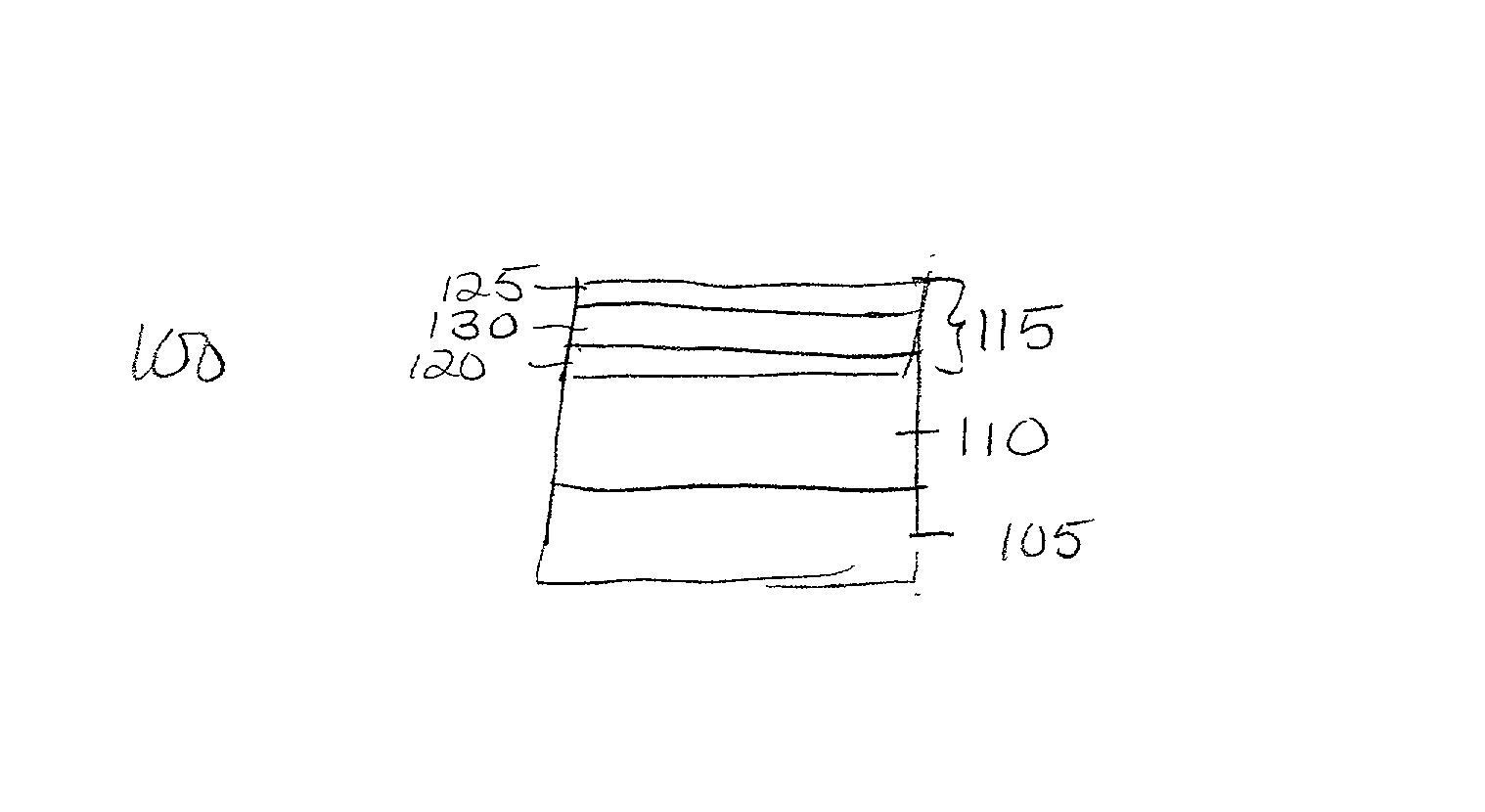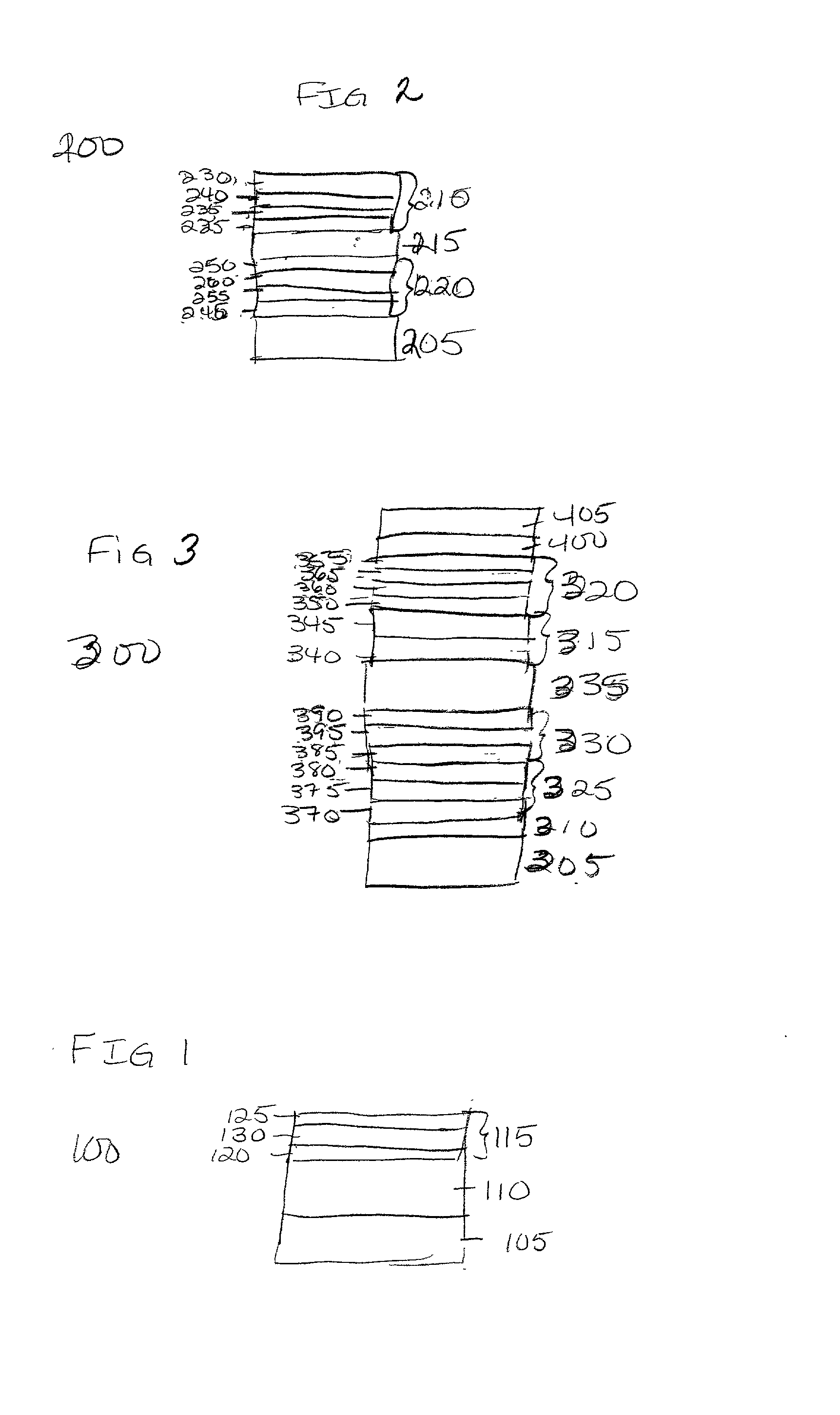Environmental barrier material for organic light emitting device and method of making
- Summary
- Abstract
- Description
- Claims
- Application Information
AI Technical Summary
Benefits of technology
Problems solved by technology
Method used
Image
Examples
Embodiment Construction
[0026] One embodiment of the present invention is shown in FIG. 1. The encapsulated OLED 100 includes a substrate 105, and organic light emitting device 110, and a first barrier stack 115. First barrier stack 115 includes first decoupling layers 120, 125 and first barrier layer 130. The organic light emitting device 110 is encapsulated between the substrate 105 and the first barrier stack 115.
[0027] Although FIG. 1 shows a barrier stack with decoupling layers on both sides of a barrier layer, the barrier stacks can have one or more decoupling layers and one or more barrier layers. There could be one decoupling layer and one barrier layer, there could be multiple decoupling layers on one side of one or more barrier layers, or there could be one or more decoupling layers on both sides of one or more barrier layers. The first layer of the barrier stack can be either the decoupling layer or the barrier layer, and the last layer can be either. The important feature is that the barrier st...
PUM
 Login to view more
Login to view more Abstract
Description
Claims
Application Information
 Login to view more
Login to view more - R&D Engineer
- R&D Manager
- IP Professional
- Industry Leading Data Capabilities
- Powerful AI technology
- Patent DNA Extraction
Browse by: Latest US Patents, China's latest patents, Technical Efficacy Thesaurus, Application Domain, Technology Topic.
© 2024 PatSnap. All rights reserved.Legal|Privacy policy|Modern Slavery Act Transparency Statement|Sitemap


